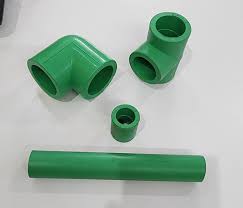Nov . 22, 2024 20:57 Back to list
hdpe pipe to pvc pipe connection manufacturer
Connecting HDPE Pipes to PVC Pipes A Comprehensive Guide for Manufacturers
In the world of plumbing and water distribution, the ability to connect different types of pipes is crucial for efficient system design. High-Density Polyethylene (HDPE) and Polyvinyl Chloride (PVC) are two of the most widely used materials in piping systems. Each comes with its unique properties, strengths, and applications. However, there often arises the need to connect HDPE pipes to PVC pipes, and understanding the best practices and methods is essential for manufacturers and installers alike.
The Characteristics of HDPE and PVC Pipes
HDPE is known for its outstanding flexibility, resistance to impact, and high tensile strength. Its smooth interior walls reduce friction, enhancing flow rates and minimizing deposition. These features make HDPE particularly suitable for applications like water mains, sewage systems, and agricultural piping.
On the other hand, PVC is recognized for its durability, resistance to corrosion, and low cost. It is widely used for drainage, waste, and vent (DWV) systems. PVC pipes are rigid and require specific fittings and solvents for connections, which can complicate the integration with other materials.
Importance of a Reliable Connection
Connecting HDPE and PVC pipes efficiently is paramount, as the integrity of plumbing systems relies on seamless transitions between materials. If not done correctly, these connections can lead to leaks, pressure loss, and ultimately costly repairs. Given the different physical and chemical properties of HDPE and PVC, proper techniques and materials must be employed.
Methods for Connection
1. Mechanical Couplings One of the most common methods for connecting HDPE to PVC is through the use of mechanical couplings. These fittings allow for a secure connection without the need for welding or adhesives. Mechanical couplings typically consist of a gasket and clamps that create a water-tight seal. This method offers the advantage of easy installation and disassembly, making it ideal for maintenance purposes.
2. Transition Fittings Manufacturers produce specific transition fittings designed to connect HDPE and PVC pipes. These fittings can include a bell end for PVC and a plain end for HDPE, allowing both pipe types to connect seamlessly. Transition fittings usually come with integrated seals that provide added security against leaks.
hdpe pipe to pvc pipe connection manufacturer

3. Flanged Connections In applications with high pressure or where disassembly is frequent, flanged connections can be employed. Both HDPE and PVC can be fitted with flanges that allow for a robust connection. This method provides an excellent solution for applications requiring frequent maintenance.
4. Adhesives and Binders For certain applications, specially formulated adhesives can be used to bond HDPE and PVC pipes. However, it's essential to ensure that the adhesive is compatible with both materials, as improper bonding can lead to failure at the joint.
Installation Best Practices
When installing connections between HDPE and PVC, following best practices is vital to ensure long-lasting results
- Proper Cutting Ensure that pipe ends are cut cleanly and squared to facilitate a good fit. - Deburring Remove any burrs or rough edges from the cut ends to prevent damage to gaskets or seals. - Use of Compatible Materials Always use fittings and adhesives specifically designed for connecting HDPE to PVC to avoid compatibility issues. - Alignment Properly align the pipes before securing the connection to prevent undue stress, which can lead to joint failure.
Testing and Maintenance
Once the HDPE and PVC pipes are connected, it's essential to test the system for leaks by applying pressure tests as per industry standards. Regular inspection and maintenance are also crucial to ensure the longevity of connections, especially in systems that experience variable pressures or harsh environmental conditions.
Conclusion
The ability to connect HDPE pipes to PVC pipes is a critical skill for manufacturers and installers in the plumbing industry. By understanding the characteristics of both materials, knowing the various connection methods, and following best practices, professionals can create reliable, efficient piping systems. As the demand for integration between different piping materials rises, manufacturers must stay informed about the latest techniques and innovations in this area. Ensuring strong and reliable connections will ultimately benefit users and boost the overall efficiency of plumbing systems.
-
High-Quality PVC Borehole Pipes Durable & Versatile Pipe Solutions
NewsJul.08,2025
-
High-Quality PVC Perforated Pipes for Efficient Drainage Leading Manufacturers & Factories
NewsJul.08,2025
-
High-Quality PVC Borehole Pipes Durable Pipe Solutions by Leading Manufacturer
NewsJul.08,2025
-
High-Quality PVC Borehole Pipes Reliable PVC Pipe Manufacturer Solutions
NewsJul.07,2025
-
High-Quality UPVC Drain Pipes Durable HDPE & Drain Pipe Solutions
NewsJul.07,2025
-
High-Quality Conduit Pipes & HDPE Conduit Fittings Manufacturer Reliable Factory Supply
NewsJul.06,2025

